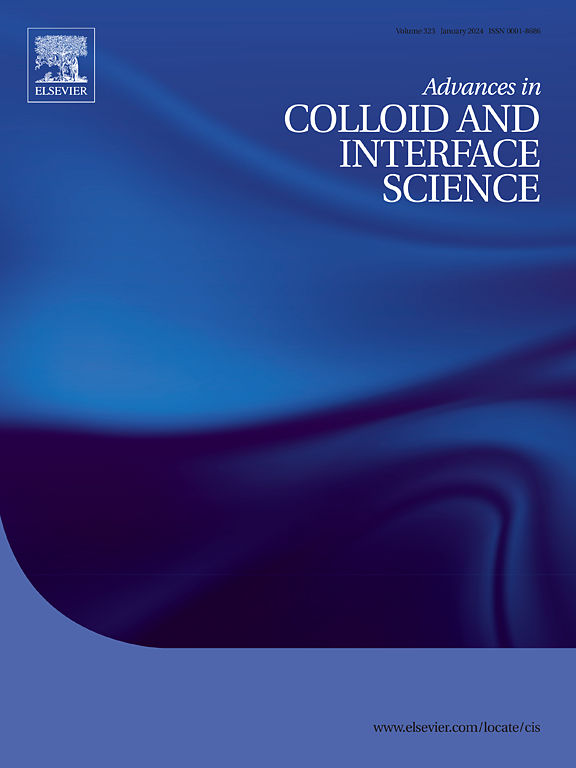Multi-scale rheology for emulsion stability investigation: Bulk-, interfacial-, and micro-perspectives
IF 19.3
1区 化学
Q1 CHEMISTRY, PHYSICAL
引用次数: 0
Abstract
Emulsions are hierarchically structured complex fluids, whose physical stability plays an imperative role in their production and application. The rheology at different length-scales (macroscopic: bulk rheology; mesoscopic: interfacial rheology; microscopic: microrheology) are powerful tools to comprehensively investigate the emulsion stability from a multi-scale point of view. A lack of systematic knowledge on the suitability of all the three rheological techniques, which have been progressing rapidly in recent years, for emulsion stability characterization underscores the necessity of this review. Herein, we begin with a concise review of the common destabilization mechanisms in food emulsions. Then we critically summarize various rheological techniques for emulsion stability investigation, covering the thorough testing modes of each technique. The qualitative and quantitative relationships between different rheological parameters and emulsion stability are described to promote a mechanistic understanding, taking into account both classical theoretical models and state-of-the-art analytical protocols. The strengths and weaknesses of each method are also evaluated to determine the suitability of each rheological technique in investigating emulsion stability. Finally, we point out the future trends by analyzing the current knowledge and technical gaps to further advance this field. We hope this review can provide detailed guidance for the rational formulation and processing control of emulsions for higher stability performance.

乳液稳定性研究的多尺度流变学:整体、界面和微观视角
乳剂是一种分层结构的复杂流体,其物理稳定性在其生产和应用中起着至关重要的作用。不同长度尺度下的流变学(宏观:体流变;介观:界面流变性;微观(微流变学)是从多尺度角度全面研究乳状液稳定性的有力工具。这三种流变学技术近年来发展迅速,但由于缺乏对其适用性的系统认识,这一综述强调了其必要性。在这里,我们首先简要回顾了食品乳剂中常见的不稳定机制。然后,我们批判性地总结了各种用于乳液稳定性研究的流变学技术,涵盖了每种技术的全面测试模式。描述了不同流变参数和乳液稳定性之间的定性和定量关系,以促进机理理解,同时考虑到经典理论模型和最先进的分析方案。还对每种方法的优缺点进行了评估,以确定每种流变学技术在研究乳液稳定性方面的适用性。最后,通过分析目前的知识和技术差距,指出了未来的发展趋势,以进一步推进该领域的发展。希望能对乳剂的合理配方和工艺控制提供详细的指导,以获得更高的稳定性。
本文章由计算机程序翻译,如有差异,请以英文原文为准。
求助全文
约1分钟内获得全文
求助全文
来源期刊
CiteScore
28.50
自引率
2.60%
发文量
175
审稿时长
31 days
期刊介绍:
"Advances in Colloid and Interface Science" is an international journal that focuses on experimental and theoretical developments in interfacial and colloidal phenomena. The journal covers a wide range of disciplines including biology, chemistry, physics, and technology.
The journal accepts review articles on any topic within the scope of colloid and interface science. These articles should provide an in-depth analysis of the subject matter, offering a critical review of the current state of the field. The author's informed opinion on the topic should also be included. The manuscript should compare and contrast ideas found in the reviewed literature and address the limitations of these ideas.
Typically, the articles published in this journal are written by recognized experts in the field.

 求助内容:
求助内容: 应助结果提醒方式:
应助结果提醒方式:


